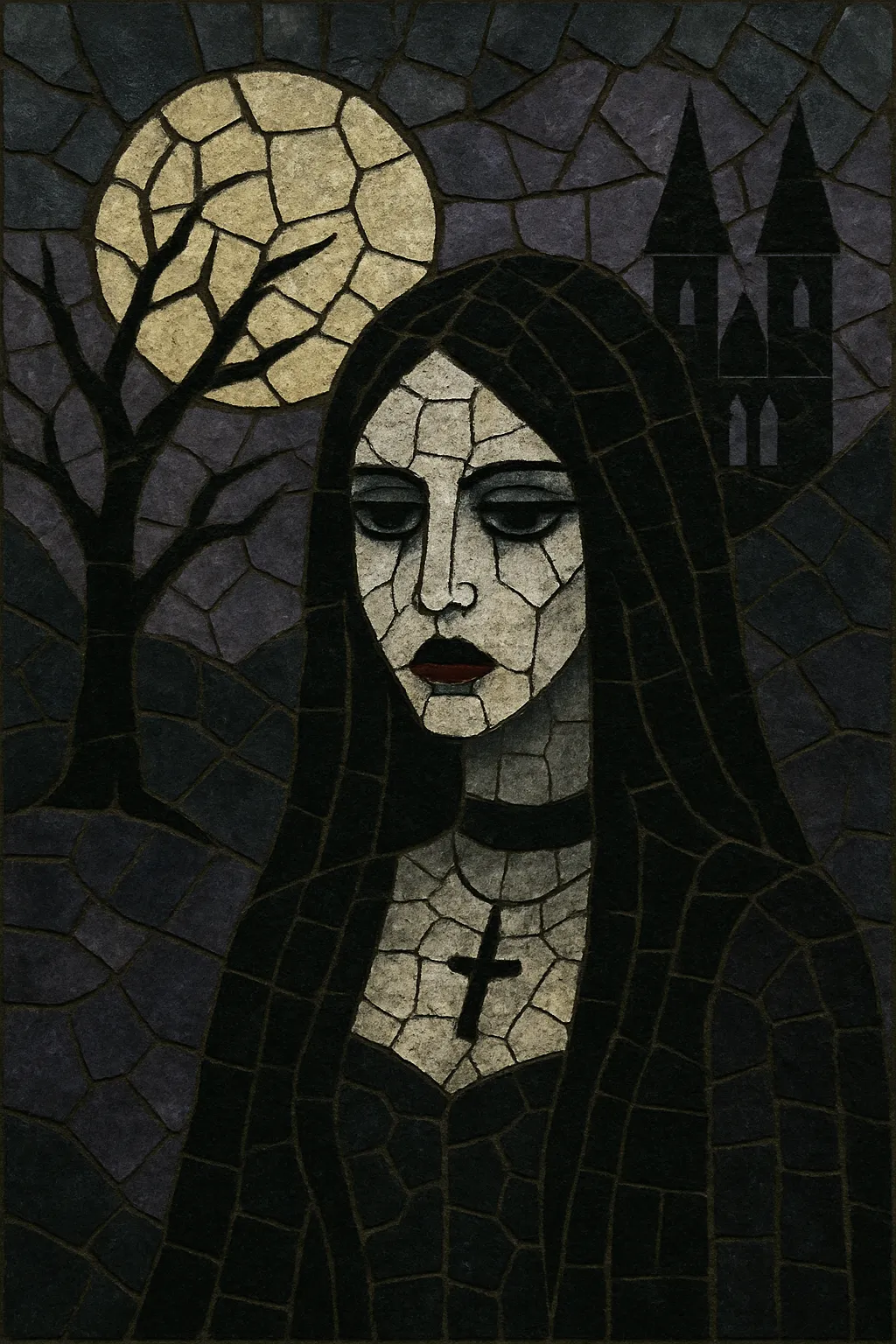Gothic (often shortened to goth in a musical context) is a dark, atmospheric strain of post‑punk that emphasizes minor-key harmonies, bass-led grooves, and a brooding, romantic sensibility.
It blends the stark urgency of punk with art-rock textural experimentation, icy new-wave synths, and lyrical themes drawn from gothic literature, existentialism, and melancholic introspection.
Signature traits include chorus- and reverb-drenched guitars, prominent melodic basslines, steady drum-machine patterns, baritone or ethereal vocals, and a production aesthetic that favors space, echo, and nocturnal ambience.
While closely associated with the UK goth subculture, the style quickly spread internationally, influencing parallel scenes such as dark wave, deathrock, and later gothic metal.
Gothic emerged in the United Kingdom at the end of the 1970s as a darker, more atmospheric offshoot of post‑punk. Bands inspired by punk’s DIY ethos began exploring minor keys, cavernous reverbs, and literary, macabre imagery. Bauhaus’s 1979 single “Bela Lugosi’s Dead” is frequently cited as a blueprint, while Siouxsie and the Banshees and early The Cure expanded the sound’s palette. Underground clubs like the Batcave in London helped consolidate a community and aesthetic.
Through the early to mid‑1980s, the scene coalesced around acts such as The Sisters of Mercy, The Cure, and Fields of the Nephilim, whose bass-forward mixes, drum machines, and spectral guitars defined the style. Independent labels and alternative radio supported a surge of releases, and parallel styles arose: dark wave in continental Europe and deathrock on the U.S. West Coast. Visual identity—black attire, dramatic makeup, and Victorian/decadent motifs—became inseparable from the sound.
In the 1990s, the core post‑punk lineage persisted alongside new hybrids. Ethereal wave and neoclassical dark wave emphasized lush pads, choirs, and chamber textures. Simultaneously, metal scenes absorbed gothic’s atmosphere and romanticism, catalyzing gothic metal. Festivals and clubs in Germany and elsewhere (e.g., Wave‑Gotik‑Treffen) turned the movement into a durable transnational network.
A steady revival cycle has kept gothic visible, with post‑punk revival acts adopting goth’s basslines and guitar treatments. Digital production tools made its hallmark reverbs, choruses, and drum machines widely accessible, enabling cross‑pollination with witch house, dark pop, and modern synth‑driven styles. Today, gothic endures as both a classic sound and a flexible aesthetic language across underground and alternative music.


